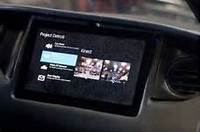OEM Connected Car System Processor Market to be Worth $1.6 Billion by 2020
 |
LONDON--October 7, 2013: ABI Research forecasts that the revenues from main processors shipped in OEM-installed connected car telematics systems will increase from around $360 million at the end of 2012 to $1.6 billion globally by the end of 2020.
“4G LTE networks will enable low-latency, data-intensive infotainment applications such as real-time navigation services (for example, Google Earth), real-time traffic updates and video streaming applications”
Developments in the smartphone world are revolutionizing consumers’ in-car expectations and creating growth opportunities for silicon providers offering automotive grade products capable of meeting the rigorous demands of the automotive industry.
Next-generation infotainment systems will have advanced navigation systems and highly responsive Human-Machine-Interfaces which will require fast processors with excellent graphics capabilities to quickly render real-time directions and traffic conditions in 3D. “Leading silicon players are developing scalable processor products that cover a range of solutions from market entry to high-end while maintaining software compatibility, and many of these will have dedicated graphics processing units (GPUs) to deal with the increasing demands of infotainment systems and automotive clusters,” comments principal analyst, Gareth Owen.
Connectivity is another area in the automotive electronics segment that is expected to expand significantly during the next few years and will trigger further incremental semiconductor usage in vehicles. Key technologies used for car connectivity include cellular technologies such as 4G LTE and in-car technologies such as Bluetooth 4.0, 5G Wi-Fi, NFC as well as wired and wireless networking technologies such as Ethernet and 802.11ad (WiGig).
“4G LTE networks will enable low-latency, data-intensive infotainment applications such as real-time navigation services (for example, Google Earth), real-time traffic updates and video streaming applications,” adds Owen. “Bluetooth Low Energy will offer many benefits including low-power consumption, lower cost, enhanced range and interoperability and will enable more personalization of the car and in-car infotainment system, as well as enable the introduction on many new and novel applications.”


